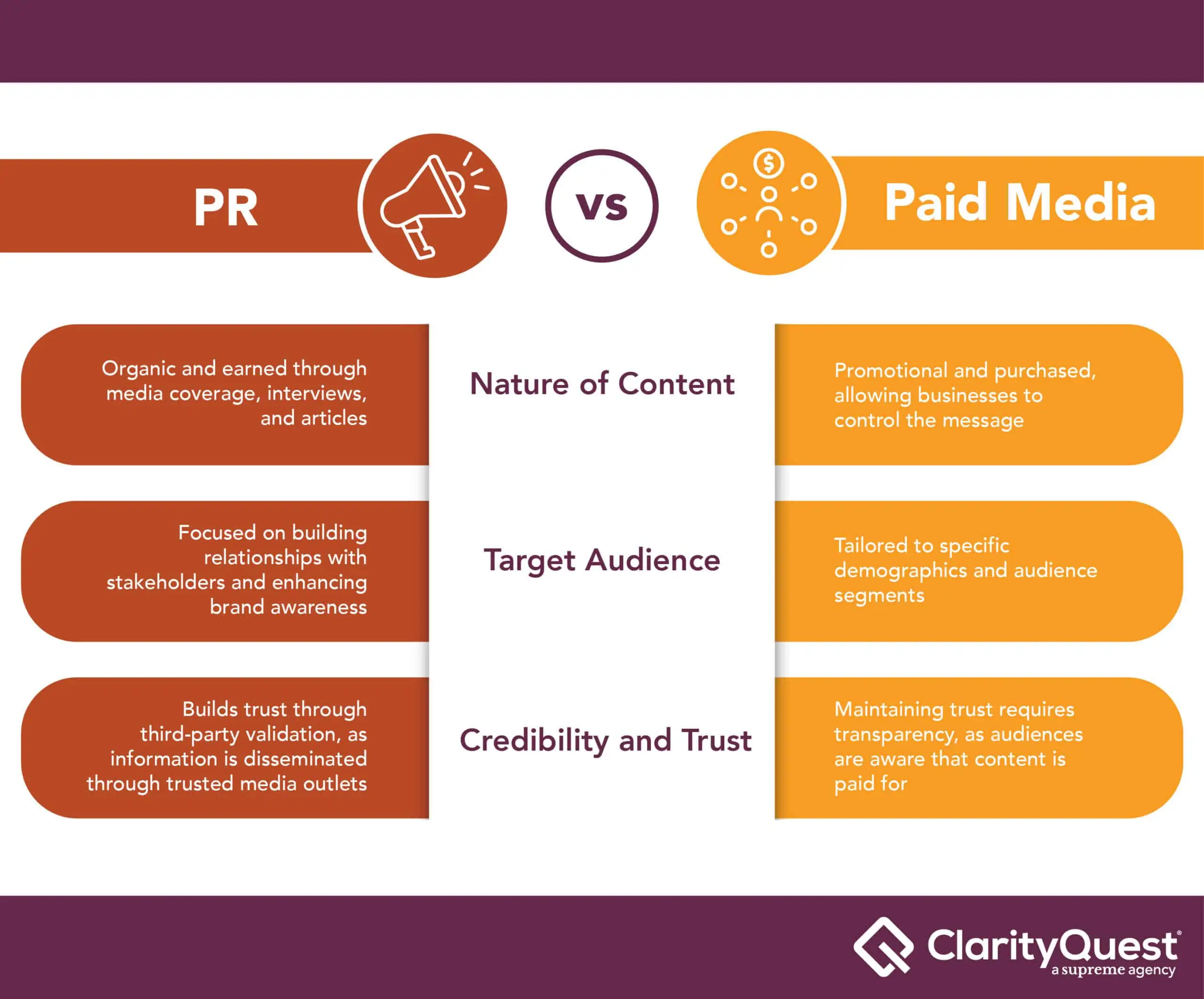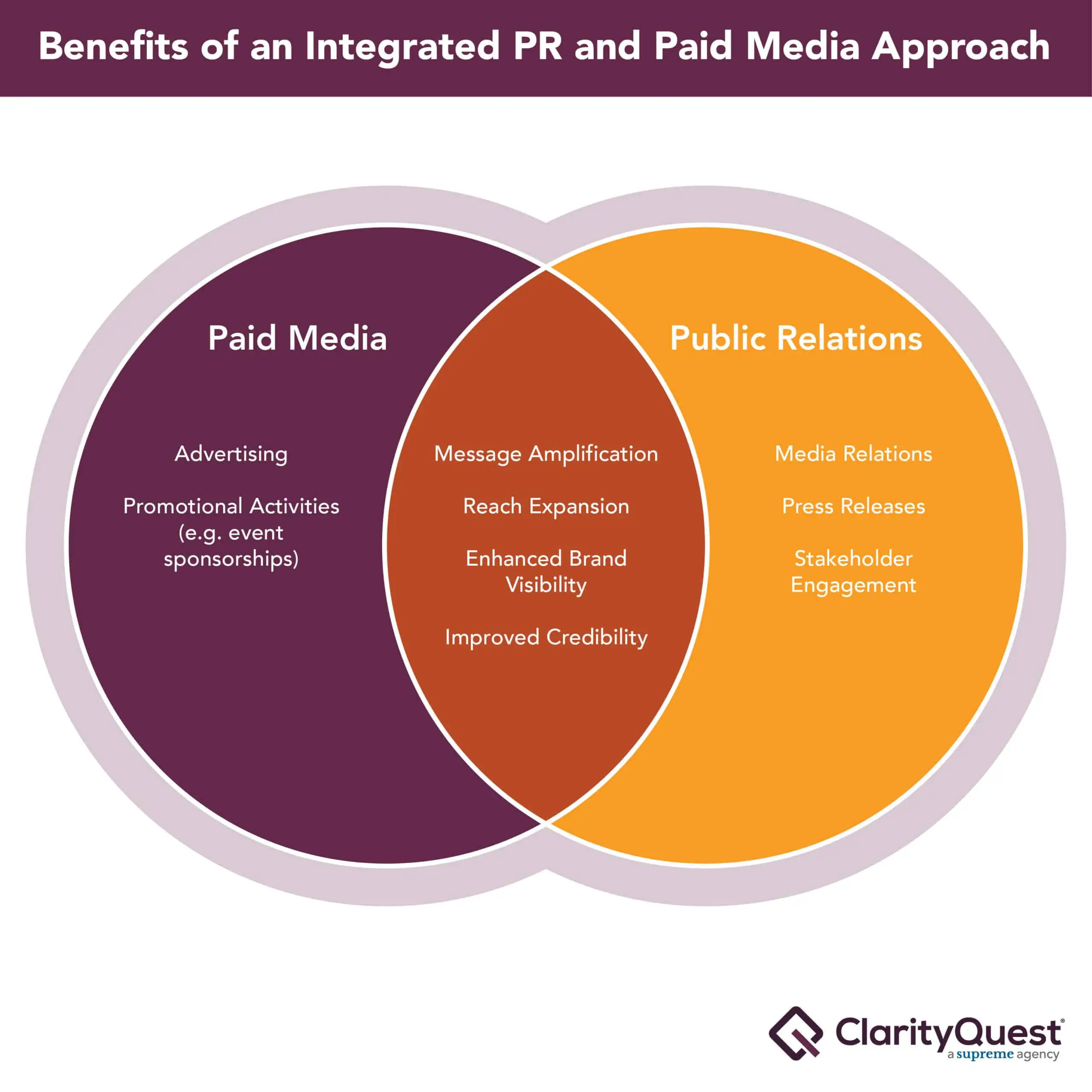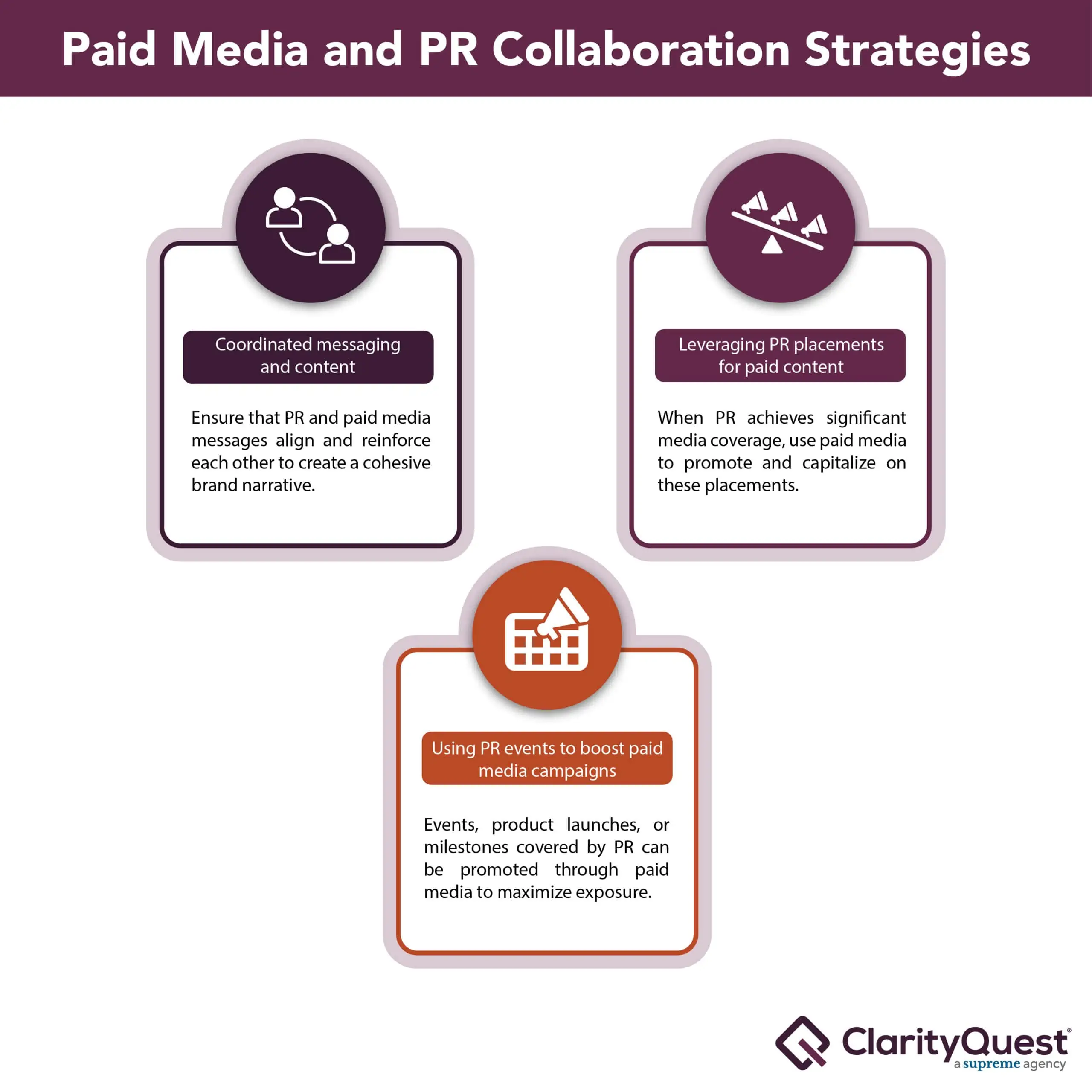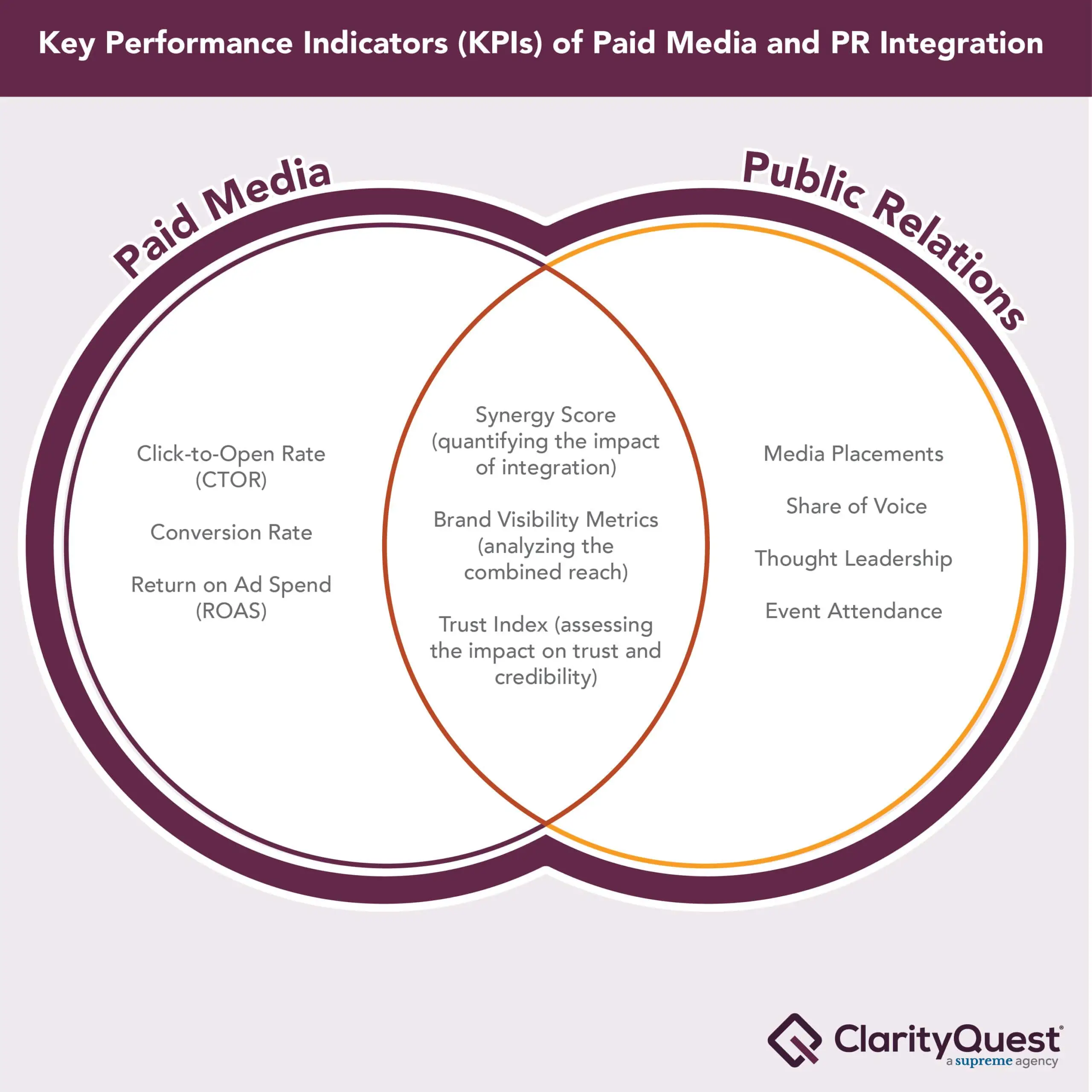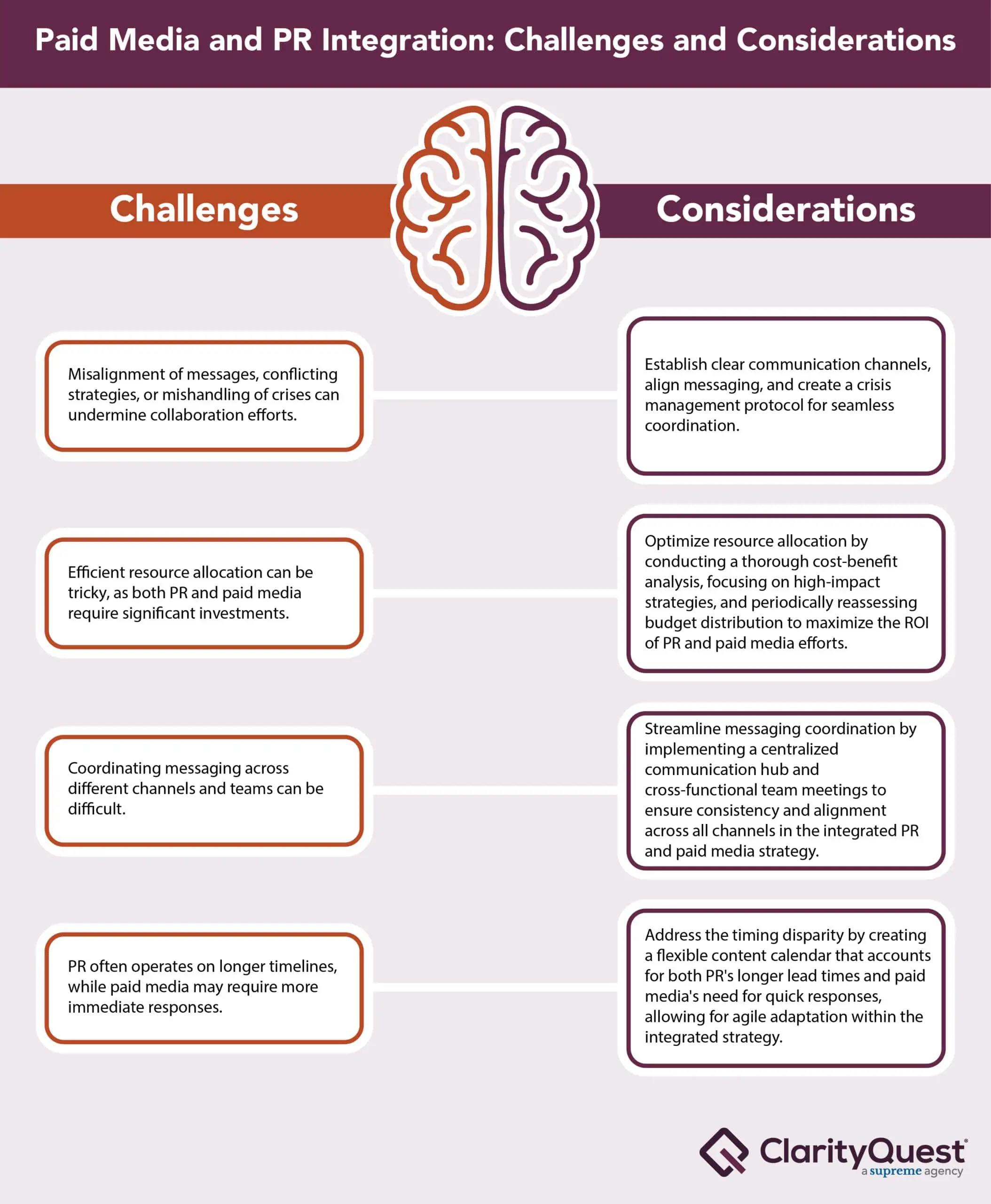1. Coordinated messaging and content
Ensuring that PR and paid media messages align and reinforce each other is crucial for maintaining a consistent, trustworthy, and powerful brand narrative. It enhances the brand’s ability to reach and engage its audience, build lasting relationships, and adapt to the ever-changing media landscape.
Ultimately, a coherent brand narrative strengthens a brand’s position in the market and fosters brand loyalty among consumers.
2. Leveraging PR placements for paid content
Using paid media to promote and capitalize on PR placements is a strategic approach to enhance the reach, impact, and ROI of PR efforts. It leverages the strengths of both earned and paid media to ensure that your brand’s message is seen by the right people at the right time, fostering engagement and driving results.
3. Using PR events to boost paid media campaigns
Combining PR coverage with paid media promotion enhances your ability to create a strong and successful marketing campaign for events, product launches, and milestones. It allows you to reach a wider audience, target specific demographics, maintain control over timing, measure results, and adapt to changing marketing dynamics, ultimately leading to a more impactful and effective marketing strategy.
